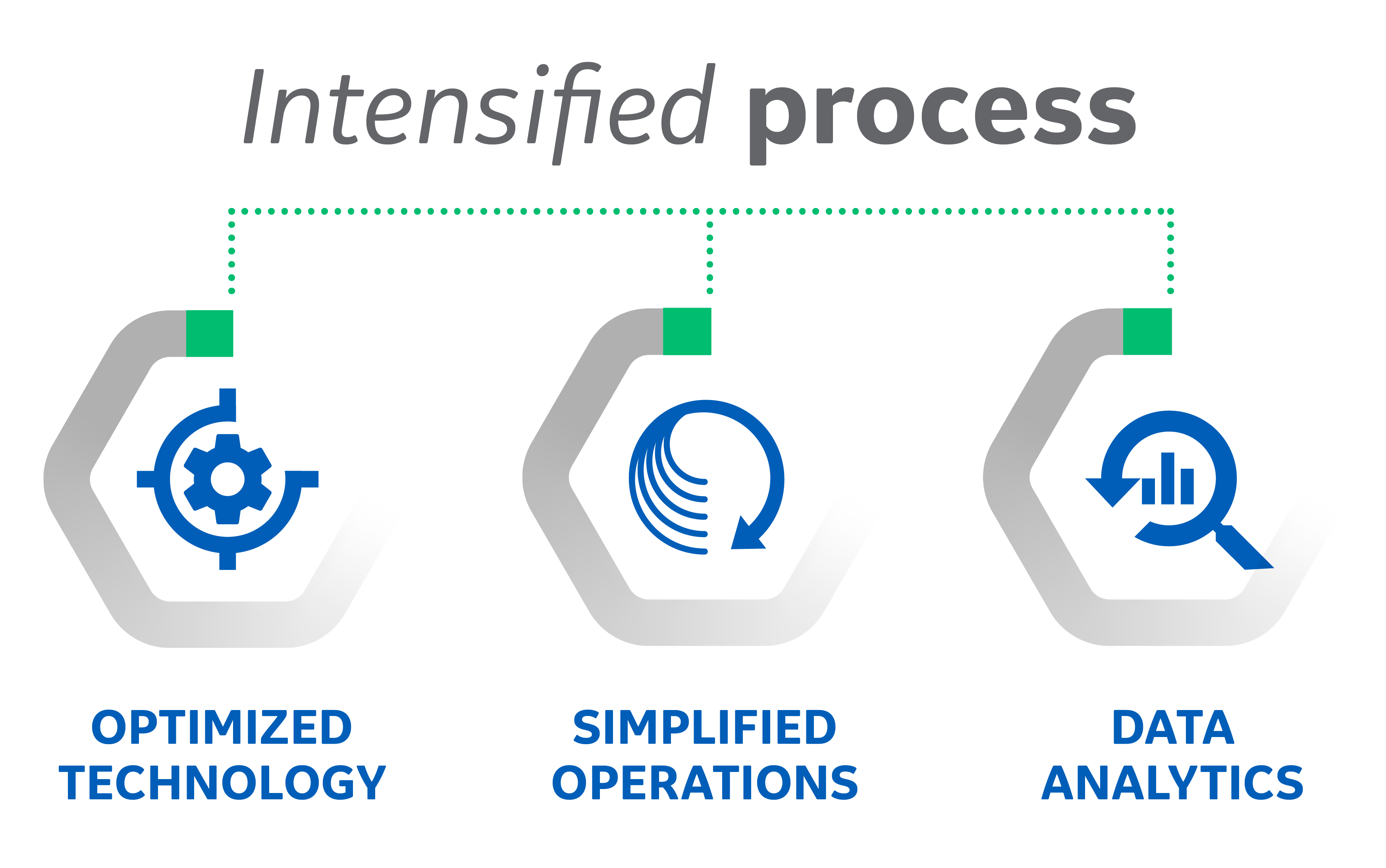Process intensification lets you maximize productivity, while minimizing one or more key variables of your current biomanufacturing process – such as time, volume, or dollar. But how can you apply it to make your processes more efficient?
An increase in therapies targeting smaller niche segments of the market rather than blockbuster drugs for large patient populations is creating new pressures on biomanufacturers to meet patient needs. As a result, there is a growing focus on implementing process intensification approaches as a way to produce high-quality drugs in a more efficient and cost-effective way. Whether it is referred to as bioprocess intensification, intensified biomanufacturing, or intensified processing, the goal of process intensification is the same—to increase productivity per some form of measurement, such as time, volume, or dollar.
Through an integration of technologies, operation simplification, and insights via analytics, process intensification offers a wide range of opportunities to enhance drug development and manufacturing (Fig 1). Leveraging this extended connected platform with increased data sharing could revolutionize biomanufacturing, providing a route to risk reduction and economic global manufacturing in an increasingly fragmented market. Yet, in today’s industry, how does one do more with less?
Fig 1. Three pillars of process intensification, offering a wide range of opportunities to enhance drug development and manufacturing.
Continuous processing, a concept increasingly supported by regulators, has become a key step toward achieving an intensified process, and while the complexity of the method and expenses of its application have slowed industry-wide adoption, increased collaboration and communication across the industry is driving greater adoption. However, a methodical strategy for implementing intensified processes must be applied before you can realize the benefits of this modernized approach to manufacturing. From a facility management perspective, addressing the aging infrastructure and outdated equipment of legacy facilities has also long been an issue for biomanufacturers trying to move into the next era of manufacturing. Through system adaptability techniques, though, you can create smarter workflows that offer more flexibility in this new era of manufacturing.
Additionally, streamlining your operations to reduce waste and selecting reliable suppliers that can support you through the ebbs and flows of an unpredictable business is critical. This is essential in utilizing single-use technology, which has not only increased in use but also changed the paradigm of the customer/supplier relationship. Without a supplier that can consistently provide dependable equipment, you face costly delays and interruptions that could eventually impede all other process intensification efforts. Further methods for process intensification include increasing the efficiency and integration of upstream and downstream processing, ultimately moving toward the goal of a fully automated process.
As a supplier dedicated to preparing today’s industry for the future of bioprocessing, we have compiled a few select articles about solutions and strategies you can consider during your own journey toward a faster and more flexible, cost-effective approach to drug development and manufacturing. It is only through the support of your goals that we can become a true partner in realizing the business needs of our customers and driving the innovation necessary to revolutionize patient care.
About the author:
Bill Whitford is Strategic Solutions Leader in Logan, UT with over 20 years experience in biotechnology product and process development. He joined the company as an R&D Leader developing products supporting protein biological and vaccine production in mammalian and invertebrate cell lines. Products he has commercialized include defined hybridoma and perfusion cell culture media, fed-batch supplements, and aqueous lipid dispersions. An invited lecturer at international conferences, Bill has published over 250 articles, book chapters, and patents in the bioproduction arena. He now enjoys such activities as serving on the Editorial Advisory Board for BioProcess International.
Discover more in the Process Efficiency series:
- Optimizing process efficiency in upstream manufacturing
- 4 steps toward end-to-end connected manufacturing
- Achieving operational efficiency in today’s fragmented market
- Intensified chromatography strategies
- How to adapt biomanufacturing processes

